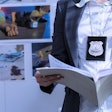Dear Buyer's Guide Update Member,
Seeing is believing, as the old saying goes. In dentistry, seeing better means earlier diagnosis of oral health problems and improved treatment outcomes.
Finding the right dental loupe or microscope requires careful consideration of several key features. For dental loupes, be sure to consider the resolution and field width, not just the magnifying power. Bigger is not necessarily better when peering inside a patient's mouth. If the area is magnified too much, resolution is lost, and distortion can lead to an incorrect diagnosis and treatment.
To see all of the dental loupes listed in the DrBicuspid.com Buyer's Guide, click here.
Microscopes also offer the ability to see things that can't be seen with the naked eye or even on an x-ray. But a microscope does more than reveal flaws -- it lets you refine your work, be it polishing an amalgam, more carefully positioning membranes, or getting the margins right. Cost is a consideration; initial setup can run $30,000 for a top-of-the-line model with video camera. But you can get a perfectly good setup for $15,000.
How much magnification you want depends on how you will be using the microscope. For finding canals, some experts recommend using a 15x or higher setting; for surgery, medium magnification; and for regular work with handpieces, low to medium magnification. For anything 2x or lower, a loupe will work fine.
For more tips on what to consider when buying a microscope, click here.
To see all of the microscopes listed in the DrBicuspid.com Buyer's Guide, click here.















